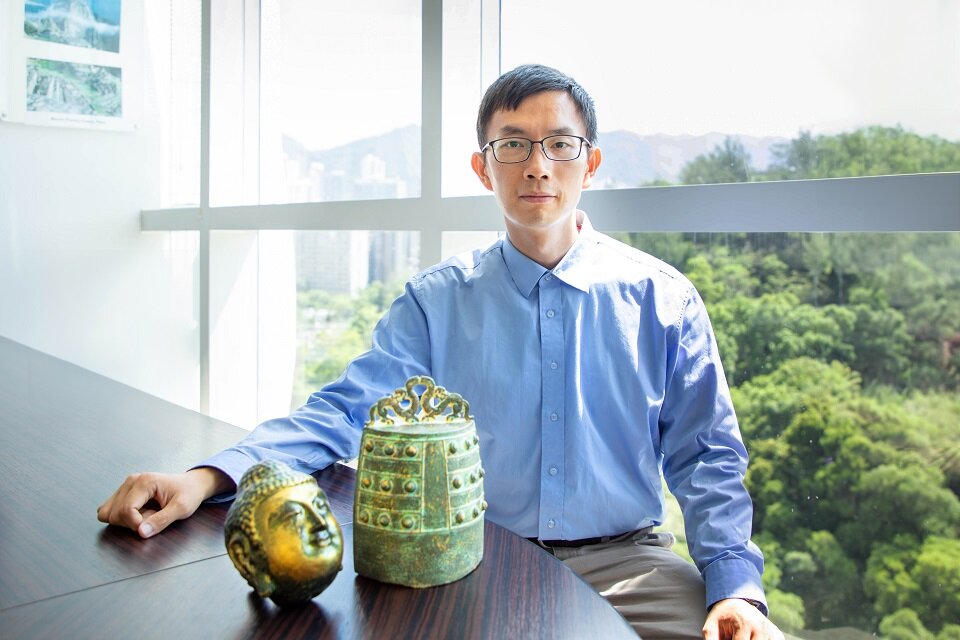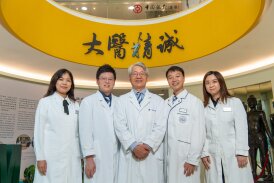
How 3D modelling brings a new perspective on ancient Chinese artefacts

Dr Sammy Li and his transdisciplinary team used 3D scanning to develop an online collection of 20 ancient Chinese artefacts and produced physical replicas of two artefacts utilising 3D printing. He is now leading a project to develop a learning platform housing 3D models of early Chinese paintings.
When Dr Sammy Li, Associate Professor of the Department of History, first started researching art history and archaeology, he encountered a common problem faced by many scholars in these fields: getting access to what he was studying. With artifacts and artwork often stored in distant museums, some even in different cities, he had to travel to view them in their entirety.
To overcome these hurdles, Dr Li began exploring the use of 3D scanning and printing technologies.
“By employing innovative 3D scanning techniques, we can recreate models of statues and artefacts that can be viewed, rotated and even touched. This allows researchers to study specific features of the objects without the need to travel,” says Dr Li.
Knowledge transfer through 3D recreations
Dr Li soon realised that creating 3D models of artefacts not only provides researchers with convenient access to valuable data, but also serves an educational purpose. He led a transdisciplinary team in developing an online collection of 20 ancient Chinese artefacts using 3D scanning, enabling the general public to view these objects spanning from the Neolithic period to the Qing dynasty.
He says: “We made the data available online so that people can understand more about research projects at HKBU, gain knowledge of art history and appreciate Chinese artefacts from the comfort of their homes.”
The team also utilised 3D printing to produce physical replicas of two artefacts. Using the replicas as teaching tools, the team taught more than 1,000 students from over 30 primary and secondary schools about the history of ancient Chinese art. “For young students, having a physical object that they can see and touch enhances the learning experience compared to text-heavy content,” says Dr Li.
Bringing early Chinese paintings to life through an e-learning platform
Recently, Dr Li was awarded around HK$4.6 million by the Quality Education Fund e-Learning Ancillary Facilities Programme to develop a learning platform housing 3D models of early Chinese paintings.
“Our project aims to integrate research and knowledge of art history into the development of an e-learning platform, with the goal of teaching primary and secondary students about the unique characteristics and techniques of early Chinese paintings,” he says. He emphasises the importance of nurturing students’ interest in Chinese history and cultivating their appreciation for art. “When we visit a museum, we can better appreciate the pieces if we already have some knowledge about them.”
Led by Dr Li, the three-year project focuses on examining the differences and interactions between Chinese and Western conceptions of space in art. While Western artists introduced a fixed perspective based on a vanishing point in their paintings, Chinese artists traditionally employed mobile and dynamic viewpoints, which allowed the viewer’s eye to wander through the space of the work.
But how can paintings be transformed into digitalised teaching tools? The project team endeavours to develop rotatable 3D models and create a 3D database for five selected early Chinese paintings, including scrolls, murals and works influenced by Western perspective techniques. In addition, the team will build an offline learning platform and an augmented reality application to facilitate mixed-mode teaching.
“Through these platforms, users can experience the paintings as three-dimensional recreations. They can freely navigate the virtual space and explore the shifting vantage points of the artists,” says Dr Li.
Promoting digital humanities and transdisciplinary research
The HKBU project team consists of faculty members from the Department of History, Department of Interactive Media, Academy of Visual Arts, and the Digital Initiatives and Research Cluster at the HKBU Library. The team hopes that the project will promote cultural literacy in Hong Kong and foster the development of research in digital humanities, extending its impact beyond the University.
“The integration of historical research and new technologies can provide fresh perspectives on history, and we aim to share the knowledge we uncover with the public. Our work would not be possible without the support of the University, the Faculty of Social Sciences and our Department, as well as the collaborative efforts of faculty members from various disciplines,” says Dr Li.
Previous News
Next News



